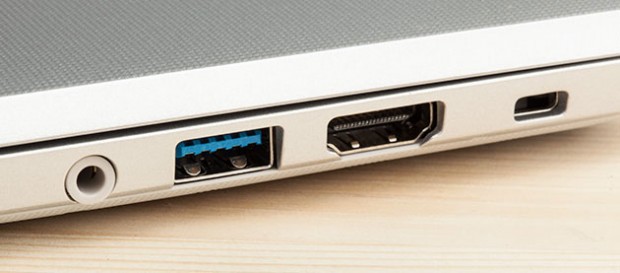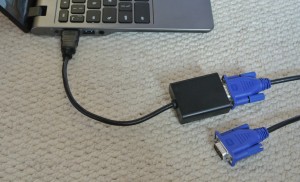Technology moves quickly. It only seems like yesterday, everyone wanted an Interactive Whiteboard. Next there were slates, wireless mice, visualisers, netbooks and, most recently, tablets. The iPad, Android tablets and Microsoft Surface haven’t had the same impact as Interactive Whiteboards but they seem to be more and more common in primary schools. However, just as we were settling down to these new device, along came the Chromebook from Google. Right now, there are no national schools in Ireland using them but they are huge in America, with most schools moving towards them over tablets. I really wanted to try one out for myself and thankfully, Paul McEvoy from Baker Security & Networks, who are the recommended resellers of Google Chromebooks, was kind enough to lend me one for the summer holidays to see what I thought.
The Google Chromebook is a laptop and uses Google’s own operating system ChromeOS, which is basically the Internet browser, Chrome, which most computers tend to use these days. One thing of note is that it is instantly on and connects to the Internet in seconds; there’s almost no wait after turning it on, much like a tablet. There is no software on these laptops and almost everything is run through the Internet. This means you can’t “download” any software and all apps are available through the Chrome Store, where there are thousands of apps, again pretty much the same as on a tablet.
The Chromebook has a number of feature not seen on tablets such as a full and real keyboard. It also has an ethernet port, USB ports and a HDMI port for hooking up to a projector. Some models has SD cards, which allow you to open up files from a memory card. Two big advantages of the Chromebook are battery-life and speed. You’ll get between 6 and 8 hours from a Chromebook battery, which is excellent. They also never slow down as there is no software installed on the machines.

I really wanted to see what could the Chromebook not do in comparison to a laptop or tablet. I wanted to see if the Chromebook is a viable option for primary schools.
I decided that I’d try and use the Chromebook instead of my laptop and see if there was any point in which I would not be able to do something. I also wanted to see if there were any apps that I couldn’t get either on a laptop of tablet. I must say, I thought it wouldn’t take long but after a full week, I had still not found any situation where I needed my laptop. However, before all that, I had a nice surprise when I switched on the Chromebook for the first time and logged in: all my bookmarks, saved passwords and information automatically were available to me.
Anyway, as most of the stuff I do on a computer is on the web, I found things such as checking email, social media, news, etc. wasn’t an issue. I also needed to blog and had to edit an image. Chrome has a large number of apps that allow you to edit images and I found them to be as good as any software I generally use. I thought saving files would be a problem but all files seem to be saved into my Google Drive, which gives me lots of space. Downloading files off the internet also saves to my Google Drive.

As I continued on, I found that for pretty much anything I needed to do, there was a way to do it in Chrome. This included screen grabbing and FTP. I also noted that Adobe Flash wasn’t a problem and neither was hooking my Chromebook to a projector. These are two things that make tablets a nuisance for teachers. A huge amount of teacher resources on the internet require Flash and iPads and most Androids do not cater for Flash. Hooking a tablet up to a projector is messy and sometimes costly.
There were, however, three times I needed to revert back to my laptop and I’ll go through them now.
Skype
You can’t use Skype on a Chromebook. There are supposed workarounds but none of them really work fully. This was a bit of a bummer for me as it means that if my school only had Chromebooks, Skype couldn’t happen. While this isn’t a huge issue as mobile phones have Skype access, it was a minor issue that needs to be pointed out.
Printing
This was one of the deal breakers for why I never went with tablets in a big way. Whether we like it or not, printing still needs to be done, despite our best efforts to becoming a paperless society. Unfortunately, the Chromebook suffers the same problem as tablets when it comes to certain printers. While it can print to most home printers, it’s not so great on networked all-in-one photocopiers. I couldn’t get mine hooked up to it, despite the fact that there is a way to do it. However, to do it, you need a computer that isn’t a Chromebook and even then it didn’t work.
MS Office
I use the offline version of MS Office for most of my work. I have tried using the online version Office 365 and I’ve tried using Google’s alternatives. I just find that nothing really comes close to the power of the real thing. Whether it’s choice of fonts to particular layouts, the full version of MS Office can’t be equalled or beaten. However, if you are a light user of Office, I think the online version will be fine. In school, it’s most certainly adequate for most children’s needs.
Software
There are some pieces of software that don’t have Chromebook alternatives but it is also the case that there are no alternatives for tablets and often for non-Windows-based laptops. I think this is a minor consideration as we move towards Internet-based software in the main. In reality, there were only 3 pieces of software I couldn’t use on the Chromebook.
Bandwidth
This is more of an unanswered question for me. I had only one Chromebook and I was using up the bandwidth of my school’s broadband. I wonder what would happen to my network if I had 30 Chromebooks on the go at the same time in my school. Would it crash the network? I have no reason to believe that anything could go wrong (for example, Chromebooks do run offline) but it’s worth thinking about. I guess the biggest issue for schools would be if they have no bandwidth to speak about! If you have no internet connection, Chromebooks are about as useful as calculators. I would also argue that a wifi setup in the school is necessary, similar to that if a school were using tablets.
With the exception of Skype, all tablets fall at the above hurdles in the main. The advantages of the Chromebook such as full keyboard and ability to use Flash and being able to log on to any Chromebook and have all your data outweighs the advantages of tablets for me. For me, tablets beat Chromebooks in the area of multimedia, such as recording images and video; they are also winners when it comes to weight. Cost is another consideration and BSN’s Chromebooks come in at around the €300 mark. This is cheaper than the premium tablets but more expensive than some of the adequate ones.
Overall, I would recommend a Chromebook in the primary classroom. It is instantly-on, it remembers every users’ data so it doesn’t matter which one a user logs into, and it does almost everything one would really need to do on a laptop. There are a number of little annoyances such as working with certain printers and no Skype (though Google Hangouts is a good alternative). I also didn’t really miss my laptop very much. The big draw, however, for me is that the battery life in Chromebooks is amazing! To have over 6 hours of power is a huge thing. The second big draw is the fact that Chromebooks never slow down. As there is no software to install, they are always as good as new every time you open them. I would recommend a school buys Chromebooks for its students and a fuller-featured laptop for its teachers. However, you’ll need decent broadband and a good network setup to get full advantage of it.
BSN currently have a Photo Caption competition to help create an awareness campaign for Toshiba Chromebooks in Schools. The competition is on their Facebook Page and on their website.
Note: Featured image is from cnet.
Last Update: August 17, 2017

I have been using a Chromebook as a carry about for two years now. For Skype I use Hangouts, and we have a cheap cloud printer which it sends to. Only real miss is one of my fav softwares, Tarsia, won’t run, nor Minecraft. Battery life amazing.
Thanks for the comment, Mags. I do like the Chromebook and think it will be a good addition to classrooms for the battery life alone.
We have purchased a set of 10 Chromebooks for our primary school this year. We are very excited to start using them!!!
I think you’re the first national schools to buy them – well done!
Your printers should work fine with Chromebooks so long as they support printing by internet or print by email. Most recent printers work fine.
Also, you can always use office.com to use Microsoft’s Excel/Word/Powerpoint. It’s not the complete versions but they are more then up to the task.
Thanks for the comments. The trouble is it doesn’t hook up with the school printer, which is a bummer. I agree that MS365 is generally ok but it’s not enough for what I want to do.
There is a Skype web client in beta that works on Chromebooks.
Thanks, Conor. I didn’t know that. Is there a link to this?
https://web.skype.com
Thanks a million for that. Will check it out!
Dear Simon,
I read your Chromebook article with great interest from a research point of view as we have been deliberating a purchase of student devices this school year ourselves. I managed to win one of those BSN Chromebooks in their caption competition so that allowed me some experience of the devices prior to purchasing. We bought 18 for the price of 15 just recently with BSN. They ran a promotion of buy 5 get one free and obviously that sweetened the deal! I’m told they will be running the promotion or similar again in March this year. (We managed to get a price of €250 incl VAT and then we bought an add-on admin facility for an extra €22 per device good for 3 yrs) An added feature for any schools running GAFE is that the devices can be registered and managed efficiently from the admin dashboard for the above €22 fee (monitor and manage/direct use eg. what websites to access/restrict). Also, from a software perspective we have overcome the MS Word issue using a chrome extension that allows users work on a word doc and save as a word doc all in the google drive / chrome browser. (https://chrome.google.com/webstore/detail/office-editing-for-docs-s/gbkeegbaiigmenfmjfclcdgdpimamgkj?utm_source=gmail)
I had intended to complement the Chromebooks we bought with a purchase of tablets in the future but now I’m rethinking that notion. I’ve also become aware recently of DELL chromebooks new to the market and their top offering incorporates a 180deg keyboard ‘hinge’ (akin to the MS Surface products) and a touchscreen which comes in at the 300eur price point.
I will send you on a photo of our newly-built Chromebook trolley designed and manufactured by our wonderfully talented caretaker, Frank who I’m told has the patent pending!
Best regards and thanks again for the article,
Paul
ICT Coordinator
Aston Village ETNS
Drogheda
Co. Louth
Thanks for the great feedback. Would love to hear more about how you’re getting on in the future